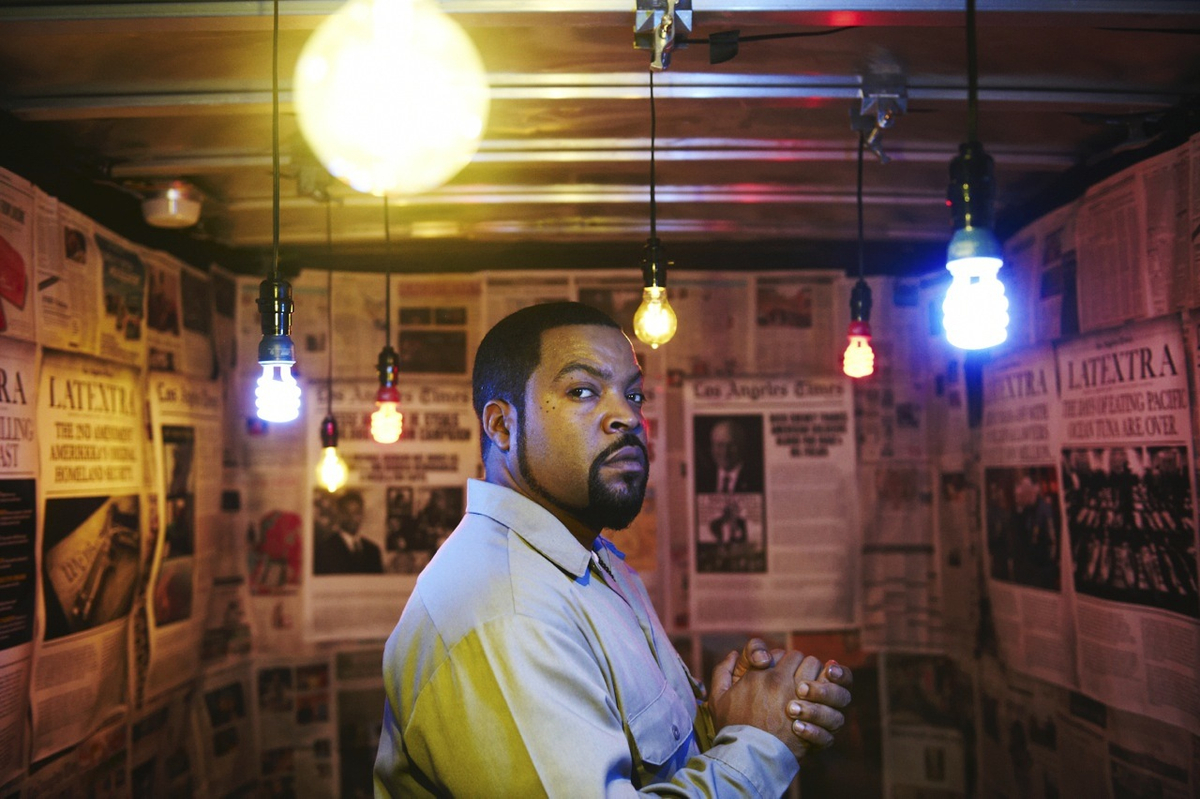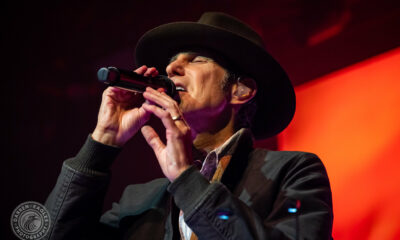Culture
Gori and Mandem: The Saga of the Dixon City Bloods
A few years after the turn of the century, the Dixon City Bloods wreaked havoc in Toronto, going to war with just about everyone.

Toronto is the most populated city in Canada. The population of the Greater Toronto Area stands at over six million, with Toronto proper claiming a population of 2.9 million. The Mayor of Toronto at the time of the tale is Rob Ford, who plays a minor but scandalous role in the saga of the Dixon City Bloods. Just over 49 percent of Toronto’s citizens are classified as “visible minority groups.” A politically correct, polite, and agreeable way of saying they aren’t white.
One of Toronto’s former suburbs, now assimilated into Toronto, is Etobicoke. Inside Etobicoke, on Dixon Road, which turns into Airport Road, is a housing complex called Dixon City. Technically, Dixon City is not really Dixon City, but that’s how everyone refers to it. The name of the housing complex has come to designate the surrounding area. Dixon City is the Little Somalia of Toronto, an enclave of Somali-Canadians. Aware that Dixon Road designates the Somalian enclave, everyone simply calls the area Dixon City, a kind of verbal shorthand for “the place where the Somalians live.”
Beginning in the 1980s, because of Canada’s liberal immigration policies, many Somalis, seeking to escape the dismal conditions of Somalia, jumped ship and landed in Toronto, congregating in the apartment complexes located on Dixon Road and Kipling Avenue. Most of the Somali immigrants were Sunni Muslims. The reason they ended up on Dixon Road was because, in 1988, Transport Canada, Canada’s version of the FAA, decided to allow passenger aircraft to fly over the Kingsview area. Air traffic over the area increased drastically. Upset, disgruntled, and downright pissed off, middle-class residents of the area moved. They packed up their belongings and split. The mass exodus resulted in lots of vacant homes and apartments and sent property values plummeting to the bottom of the barrel.
Arriving Somalis took up residence in the area for two reasons: one, the cost of housing was cheap; two, it was close to Pearson Airport, which meant they didn’t have far to go after they cleared customs and immigration.
When the Somali government collapsed with a sickening thud in 1991, a new wave of immigrants arrived, thousands of them. Most of the new wave had heard about the Somali enclave in Toronto. They got off the plane and asked, “Where’s Dixon?” And naturally, that’s where they chose to live. Back in Somalia, Dixon City is famous. It’s so famous that Somalis in Somalia call Toronto “Dixon City” (pronounced Diksan or Dihon in the Somali language).
Meanwhile, during the 1980s, Crips began popping up in Toronto, laying claim to neighbourhoods in the city. True to their nature, the Crips banged with the local Canadian gangs, pushing them out of their territories. The Crips wanted to control the drug scene. The local gangs could either align with the Crips or find another way of making money or fight back. Most chose to fight back. To do so and make a statement, the local gangs took up the colour red, becoming Bloods. The first Blood set in Toronto was the Ardwick Bloods Crew. Other local gangs followed suit: the Young Thugz of Toronto’s west side split into two Blood sets, the Vaughan Road Bloods and the Pelham Park Bloods. The South Side Connection, the Y Gang, and the Lanes Crew flipped to Blood sets.
Somali immigrants quickly picked up on the pecking order. Poor and uneducated, they had little hope of finding employment. So they formed their own gangs, connected with drug distributors, and went into business. And violence was nothing new. They were used to carnage, sadism, cruelty, savagery, aggression, and fighting. In Somalia, violence was noteworthy only when absent.
They called themselves the Dixon City Bloods, aka Dixon True Bloods, aka Dixon Goonies. What was unusual about Somali gangs, like the Dixon City Bloods and the Sic Thugs, was that they didn’t have a firm hierarchy. Most Blood gangs utilized a pyramid-like hierarchy, where power flowed from the top down. Because of their loose structure, the Dixon City Bloods didn’t kick back taxes. They kept what they made. There were other differences, too. Somali gangs maintained low profiles and were extremely mobile, often moving as a group from city to city. In other words, they weren’t territorial and were unconcerned with turf. Somali gangs focused on easy money, operating on a commodity-based system: selling drugs and guns to anyone who wanted to buy.
Lacking a chain of command resulted in a definite drawback for the Somali gangs. They lacked emotional commitment to the gang. There was no loyalty to the gang, no one-for-all all and all-for-one attitude, no esprit de corp. This shortcoming – no loyalty – gave rise to internal squabbles and petty in-fighting. Gang members ripped off, cheated, or betrayed other gang members without a second thought. And when they weren’t ripping each other off, they were banging with other gangs: Rexdale Crips, Asian Assassins, and MS-13.
A shootout in broad daylight between the Rexdale Crips and the Dixon City Bloods took the life of Jane Creba, a 15-year-old student at Riverdale Collegiate Institute. Ms. Creba, along with her sister, was shopping on Boxing Day. The two sisters had just walked out of a Pizza Pizza store when all hell broke loose. The two gangs spotted each other and opened fire near the mall. Bullets whizzed everywhere, striking innocent bystanders. Six bystanders took hits, falling to the ground screaming, while guns popped and chattered around them.
Bystander number seven, Jane Creba, never had a chance to scream. A round punched through Jane Creba’s upper torso, passing through her body and then lodging in her clothing. Rushed to the hospital, Jane Creba died on the operating table during emergency surgery.
MS-13 gangbangers trickled into Canada during 1997, showing up in the city of Vancouver. They spread across Canada and, by 2007, were a major force in Toronto. Dixon City Bloods feuded often with the MS-13 bangers, who were into cocaine smuggling, extortion, prostitution, and bank robbery.
In the spring of 2005, Livette Olivea Miller, a recently widowed mother of four children, was leaving a Toronto nightclub – The Prestige Palace – on Milvran Drive. Outside, MS-13 bangers waited to ambush a group of Dixon City Bloods (DC Bloods). Just as Livette walked out of the nightclub, the DC Bloods entered the ambush zone. The MS-13 bangers cut loose with AK-47s. The DC Bloods busted guns and returned fire, scrambling for cover. Two rounds struck Livette, who crumpled and dropped to the ground. Already dead, Livette never knew what hit her or why.
On July 19, two “blued out” gangbangers – Rexdale Crips – chased Shamari Belnavis through a housing complex on Humber BLVD. Blasting away with their nines as they ran, the two Crips found it difficult to aim and run at the same time. A stray round clipped a 19-year-old young man walking down the street. The dude, who one second before had been sauntering along, suddenly found himself on the sidewalk with blood bubbling from his thigh. A group of nearby kids, playing, stopped and watched as the two Crips, guns blazing, ran by.
One of the Crips got lucky, sending a round into Shamari’s left shoulder. Shamari fell, sprawling on green grass. The two Crips ran up to him and stopped. Quickly reloading, they looked down at their victim for a moment, then fired. As the neighbourhood kids watched, they fired until their guns were empty.
On July 30th, early in the evening, Leroy Whittaker heard a knock on his front door. As he approached the door, a shotgun blast ripped through the door, striking Leroy in the chest. The blast tore away half of his chest. Supposedly, Leroy wasn’t involved in drugs or the underworld. So the police wondered why he had been targeted. According to the DC Bloods, Leroy owed money, which he was reluctant to pay for one reason or another. So, the Dixon City Bloods sent a crew of collectors around.
The next day, at Dundas Square, Dwayne Taylor was partying at Caribana, the annual celebration of Caribbean culture in Toronto, when he was gunned down. Dwayne was a member of the Shower Posse, a Jamaican gang. Guilty of disrespecting a member of the Dixon City Bloods, the DC Bloods decided Dwayne needed to experience a come to Jesus moment. So they blew him away during the festival.
A few months later, the Dixon City Bloods hit Jamal Hemmings, who banged for the Rexdale Crips. The DC Bloods loaded up and drove over to Rexdale, where they slowly passed by Hemming’s house. As they passed by, they pointed AK-47s out the windows of their vehicle. Triggers were pulled, and a fusillade of bullets played tic-tac-toe on the front of the house. Inside, Hemmings was sitting on the couch watching TV. He took multiple hits to his chest and abdomen, bleeding out in front of the television. Nine days later, his funeral took place at a church on the corner of Albion and Martin Grove Road. One of Hemmings’ homies, Amon Beckles, attended the funeral service. Halfway through the service, Beckles needed a cigarette, so he got up and walked outside to light up.
Four Dixon City Bloods waited out front. They wanted to make a statement, one the Rexdale Crips wouldn’t soon forget. They arrived just after the service began and set up an ambush. When the service was over, they planned on blowing away some Crips as they exited the church. Recognizing Beckles, who was appropriately “blued out” and strapped with a nine in his waistband, the Dixon Bloods decided this must be a sign from God. Easy pickings. Aiming their AK-47s, they pulled the triggers. Bullets ripped into Beckles, leaving him looking like a kitchen grater. The front of the church took multiple hits, leaving behind pockmarks. The church looked like it had a bad case of the zits that someone had picked.
Believing they had made their point – loud and clear – the Dixon Bloods reloaded, lit cigarettes, and meandered back to their car.
Most of the guns – the AK-47s, 9mms, MAC 10s and .45s – came into Canada from Michigan. Gun runners concealed the weapons in the bumpers of cars driven by Canadians – primarily people from Ontario – travelling from the U.S. back into Canada. Attaching GPS trackers to the cars transporting the guns, the cars would be traced and the guns retrieved at a later date. The drivers of the cars had no idea they were ferrying guns into Canada. Once recovered, the guns arrived in Windsor, Canada, where they were transported to Toronto and sold. In other words, there was a prodigious gun pipeline between Windsor and Toronto.
Naturally, the guns ended up in the hands of the gangbangers, who, although they knew how to load and fire the weapons, didn’t know the first thing about properly employing the weapons. The gangbangers’ motto was “spray and pray.” And that’s exactly what they did – point, fire, and hope they hit something.
Because of the rapidly rising number of gun-related events – police code for gang shootings – the cops decided to try and put a damper on the gangbangers. In 2005, police arrested 44 members of the Ardwick Bloods Crew aka A.B.C., hitting them with over 1,000 criminal charges. Then in 2006, the cops came up with a cool-sounding anti-gang operation called Project XXX. Project XXX resulted in the rounding up and arrest of 106 bangers from the Jamestown Crew, which was a Crip gang located in Rexdale, which was pretty much Crip-Heaven. The city of Rexdale was blue through and through, boasting three major Crip gangs.
The province of Ontario hired 250 additional police officers in 2007, deeming them necessary to combat the gangs and their violent tendencies. Critics of the move stated that the provincial government was just tossing gasoline onto the fire. In their defence, Ontario officials also implemented programs encouraging businesses to hire “at-risk youths” and established an anti-gun strategy. The anti-gun strategy didn’t work. Neither did the hiring initiative. “At-risk youths” didn’t want to become wage slaves when they could be making bank dealing drugs.
The police didn’t let up. They kept busting bangers. The Driftwood Crips, whose home base was the Jane and Finch area, took the heat next. The cops arrested 95 bangers, mostly Crips, including most of the O.G.s from the Driftwood crew. For one reason or another, the Dixon City Bloods avbank-dealingoided notice. In hindsight, the Somali bangers dodged the police radar simply because they were mobile, moving from city to city as the opportunity arose. The cops knew they existed but couldn’t pin them down.
All that changed in 2009.
In June of 2009, a dispatcher received a 911 call. The caller insisted there was a dead body in the lobby of her apartment complex, along with two other seriously wounded individuals. According to the woman, “The lobby is drenched in blood. Blood is everywhere.”
Police were dispatched to 340 Dixon Road, which was the address of one of six high-rise apartment buildings that sat like ducks in a row on Dixon Road – Little Somalia. When they arrived, the cops discovered that, if anything, the 911 caller had understated her description of the lobby. Lying on the polished stone floor of the lobby was Ayoob Aden.
At first glance, Ayoob appeared to be floating on a pool of his own blood, gallons and gallons of blood. Ayoob was dead. Someone had used Ayoob’s stomach as a pin-cushion, stabbing him over and over and over again. Leaning up against the lobby’s walls were two other teenagers. Both were bleeding like stuck pigs, watching as their vital bodily fluids, like rivers, drained into the ocean of Ayoob’s blood. One had a vicious gash on his arm; the other had a gaping wound in his back.
EMTs showed up a few minutes later. After one look at Ayoob, they moved immediately to the two bleeding and alive bangers.
“How’s it look?” asked one of the cops, peering over the shoulder of one of the EMTs.
The EMT looked up. “They’ll live. But they won’t be up and around very soon. Somebody really did a number on them.” His eyebrows shot up. “Gang shit?”
The cop snorted. “More than likely. These people come over here trying to get away from warlords and death and brutality. Yet when they get here, this is what they do.” He shook his head. “Makes you wonder.”
“Yeah,” agreed the EMT. “We’re gonna transport the live ones to hospital.”
“Ok,” said the cop. “Thanks.”
The EMTs loaded up their patients and, with siren blaring, took off.
Aden Ayoob’s blood was starting to crust by the time another ambulance arrived to haul his body away. Only 16 years old, Aden’s friends had called him “baby face,” because he looked fresh and innocent, like a baby. Of course, his baby face was misleading. Aden was a banger for the Dixon City Bloods; carried a gun and sold drugs.
Aden was dead because of a civil war. The Dixon City Bloods were at odds with each other. Instead of the North and the South, it was the old versus the young. The old hands – 25 was old in gang culture – wanted out. They had grown up, gotten married, or wanted to get married and, in some cases, wanted to move to Western Canada and put banging behind them. The young bangers, called “goonies,” just wanted to bang. They were pushing crack cocaine in the area and rolling in money. They went strapped, rolled in luxury cars, and had to beat the women off with sticks. Their shit was bubbling, and they had no patience with bangers who wanted to quit banging.
Aden’s death was the result of this ongoing squabble between the old hands and the goonies.
When Aden died, things heated up. The police zeroed in on the Dixon City Bloods. They began passive surveillance of 320, 330, and 340 Dixon Road. A year later, the passive surveillance morphed into a full-fledged operation, an operation focused on bringing down the Dixon City Bloods. The cops called it Operation Traveller.
During the summer of 2010, two officers in their patrol car sat a red light, when they heard a dozen gunshots nearby. Ramping up their siren and rack lights, the two officers burnt rubber around the corner, where they spotted people running, while others ducked behind parked cars or trash cans. Screeching to a stop, the cops jumped out, guns up, and scanned the area for potential bad guys. They didn’t see anything. After a few moments, they realized the situation, whatever it was, was over. Holstering their guns, they called for backup. Pretty soon, the area was swarming with cops.
One witness, a well-dressed young dude, told the cops that a group of “blacks” had been hanging out near a local daycare facility, when three other “blacks,” not from the neighbourhood, walked up, busted guns, and started blazing away at the group by the daycare. Then the three “blacks” ran to a nearby BMW and fled in their Bob Marley Wheels.
When asked how he knew the three “blacks” were not from the neighbourhood, the witness said, “Cuz they were wearing blue, man. No one around here wears nothing but red. That’s how I know.”
The group by the daycare facility were bangers from the Dixon City Bloods. The three hitters were Jamaicans, from the Shower Posse. The Shower Posse’s favoured vehicle was the BMW aka Bob Marley Wheels. The Shower Posse felt the Dixon Bloods were getting too big for their britches, selling drugs on Jamaican turf. So to demonstrate their displeasure, the Shower Posse had sent three hitters to put a scare into the Bloods. The hitters weren’t supposed to kill anybody, just “blow at ‘em.” In other words, let the fucking Bloods know they were stepping in deep shit.
Two of the Bloods there that day were Anthony Smith aka Bucks and Liban Siyad aka Gully.
After that, for a while, it was business as usual for the gangbangers. Hits and blazing gun battles gave way to the simple expedient of making money. Things settled down, but underneath the tranquil surface anger, jealousy, and the desire for revenge were churning. Inside the Dixon City Bloods, the internal gang conflict was mutating. In March of 2011, the younger, more reckless members of the Dixon City Bloods – the “goonies” – had had enough of the pansy attitudes of the old hands, who just wanted to make some easy money, a big score, and get out of gangbanging.
Abdikadir Khan, one of the old hands of the DC Bloods, was executed by the goonies. Khan was in the stairwell of a Dixon City high-rise when someone, no one knows who put a 9mm slug in the back of his head. It was definitely an execution-style slaying. Since there was really no good reason for Khan to be in the stairwell, police suspect he was snatched from his apartment and then led at gunpoint to the stairwell, where he was executed. The implication was that whoever killed him was well-known to Khan, someone he knew and trusted, another Dixon City Blood.
Khan was one of the two stabbing victims in the lobby the night Aden Ayoob was killed two years earlier. Poor Khan, he recovered from one goonie attack only to be executed in another goonie attack.
The medical examiner guessed that Khan had laid in the stairwell for about eleven hours before anyone found him and called 911. A red jacket – not Khan’s – was found at the execution scene, like a movie prop. Embroidered on the jacket was the phrase “Dead men tell no tales,” which was the title of a 1938 British thriller movie. Police reported that an informant told them Khan was killed because of the ongoing domestic conflict inside the Dixon City Bloods. The goonies considered the old hands excess baggage, traitors to the code of gangbanging.
As a result of Khan’s murder, the owners of the Dixon City high-rises decided to hire private security guards to patrol and protect their buildings. That didn’t last long. Within months the guards were rarely seen. Most of the guards just didn’t show up. It was too dangerous. And they weren’t getting paid enough to risk their lives in what they considered “a war zone.” And because of city ordinances, the police couldn’t enter the high-rises unless they were called. If they did, they were guilty of trespass. It was a no-win situation as far as external safety measures were concerned: no private security guards and no police presence.
Two Dixon City Bloods – goonies – Liban Siyad aka Gully and Ayanle Omar aka Fatboy weren’t really concerned about anything as abstract as the code of gangbanging. Gully and Fatboy didn’t give a shit whether the old hands moved on and got out of banging or were blown away. Gully and Fatboy just wanted to move drugs and make money. Their specialty was crack cocaine, which they chef-upped themselves. Chef-up was gang-slang for cooking powdered coke into crack cocaine. The two criminal entrepreneurs recognized that moving drugs necessitated guns and violence, which was just icing on the cake as far as they were concerned.
Gully and Fatboy liked three things: money, pulling the trigger on a nine, and women. Gully and Fatboy were usually accompanied by another DC Blood named Mubarak Rirash aka Franchise, who thought of himself as a gunman or muscle, an enforcer. Franchise had a tattoo on his left hand that said “Loyalty.” Next to it was another tattoo of a crown with five points, which was a gang symbol affected by the Dixon City Bloods.
Franchise had, as the police would say, a troubling history of violence. Translation: he was a bad dude with a bad attitude. For all the vaunted claims of his “loyalty” tattoo, Franchise was anything but. He had slapped the daylights out of his sister, who had pissed him off by calling him a pussy; then he punched her in the face and held a knife to her throat, threatening to kill her if she “ever dissed him again.”
When Franchise wasn’t bitch-slapping his sister or strutting around like a peacock with Gully and Fatboy, he could be found hanging with Mohamed Siad aka Soya aka Gotti aka Warlock. Siad aka Soya was unemployed and now lived in a new luxury apartment a few miles to the south of Dixon City. Before moving, Siad had lived in the Dixon Towers. He had moved because he had recently married and his new wife didn’t want to live in a shithole.
Rumour had it that Siad was looking to make some big money and move to Alberta, where he would go legit, leaving the banger life behind. Until that happened, Siad bided his time dealing crack cocaine and hanging out in a Dixon City parking lot with other Bloods, getting drunk and popping off their nines “as a salute.”
Dealing drugs wasn’t all Siad did. He also bought and sold illicit weapons, which he kept in storage lockers. The gun business was lucrative. Siad would buy nines at 500 dollars a pop, then turn around and sell them for 1,500 dollars. Siad would sell to anyone with money. He didn’t care what colours buyers wore. If they had cash, he was their man. He did, however, have one rule: he wouldn’t sell to Crips. Naturally, this discriminatory policy led to some friction with the Crips.
The result was that Siad had ongoing feuds with the Ardwick Crips and the Jamestown Crips. The Ardwick Crips were pissed because Siad wouldn’t sell them AK-47s, which they needed to maintain the balance of power. The dispute with the Jamestown gangbangers stemmed from the fact that Siad had stolen guns from the Jamestown bangers. The guns had been in the cars of the bangers’ mothers. Siad had broken into the cars and lifted the guns. In reality, the Jamestown dudes were more pissed off about the damage done to their mothers’ cars than the guns.
Fatboy had a Browning 9mm that he called “Fifi.” Fifi had never let him down. But Fatboy lusted for an AK-47 because he believed that any self-respecting banger carried a Russian chop-o-matic. So Fatboy set up a meet with Siad. Siad trotted out his wares and Fatboy fell in love with a Czech version of the AK-47. The Czechs, recognizing a good thing when they saw it, manufactured thousands of assault rifles. Without hesitation and in violation of all patent laws, they reverse-engineered the Russian AK-47, set up assembly lines, and cranked them out like candy. Knock-offs were big business.
“How much for this?” asked Fatboy, cradling the Czech rifle.
“Three large,” said Said. “That includes ammunition and two banana clips.”
Fatboy nodded. “Ok. Deal.” He pulled out a wad of money and began peeling off bills.
Meanwhile, police investigators were seeking out informants, who were easy to come by. Everyone, it seemed, was willing to provide information, if the price was right, either a get-out-of-jail-free card or cash. The problem wasn’t finding informants. The problem was finding informants with reliable information. Most snitches were great improvisers. When they knew what the police wanted, they just made it up. Nevertheless, the police investigators landed ten good stool pigeons. However, none of the informers agreed to testify in court. They didn’t want to end up eating a nine-millimeter Popsicle.
Still, the information the snitches gave up allowed the cops to zero in on certain players. Then near the end of 2012, police arrested a gangbanger in Dixon City for possession of a firearm and gun trafficking. The gangbanger’s name was never made public, which made many people believe he was a member of the DC Bloods who decided to turn rat. In any event, the Toronto police obtained warrants to search his smartphone for text messages, photos, video, and incoming and outgoing calls.
The smartphone revealed photographs of females gesturing excitedly at guns and stacks of money on a table. Examination of the phone’s text messages indicated the transaction of many cocaine deals. One such message read: “I’ll give you whops on Ur 4.5 if we grab a 9 today.” Police investigators translated this to mean that the phone’s owner would find a buyer for 4.5 ounces of cocaine if the receiver agreed to buy nine ounces.
The data gleaned from the smartphone allowed the police to target eleven individuals as persons of interest. One of those was Mohamed Siad. The Toronto police persuaded a judge to grant permission to tap the phones of Mohamed Siad and ten other suspected gang members. This marked the beginning of what came to be known as Project Traveller. It was March of 2013.
In February, one month earlier, Siad was at a bungalow adjacent to the Dixon Towers. The occasion was a social get-together of the Dixon City Bloods. Booze, babes, and drugs formed the agenda for the night. Crack cocaine was the star of the soiree. During the night’s festivities, Said made a video of Rob Ford, the mayor of Toronto, smoking crack cocaine with the Bloods. The mayor was there in the bungalow, partying with the Dixon City Bloods.
Siad, hoping to make some easy money, decided to sell the video, which depicted Mayor Ford huffing crack cocaine while making homophobic remarks. Siad contacted various media outlets, saying that he had a shocking video that would expose the truth about Toronto’s public officials, specifically the mayor. The Gawker, naturally, tried to buy it, putting together 200,000 dollars to purchase it. But the transaction never took place.
When contacted by the Gawker, Siad merely stated that the video was gone. This was a lie. The video was on Siad’s phone in a red pencil box in his apartment. The truth was that Siad was nervous, and wound way too tight. Cops were everywhere and, no matter what the video portrayed, those cops worked for Mayor Ford. Siad’s imagination imagined the video disappearing down a deep, dark hole, along with him.
Unsurprisingly, rumours of the video leaked. The news media caught wind of it and ran with it for all they were worth. When asked point-blank about it, Mayor Ford denied it, as did his public relations people. But the rumours kept circulating and the public began screaming for an investigation. The Toronto police launched Project Brazen2, which was charged with investigating the mayor and his friend Alessandro Lisi.
Later, Ford copped to it, and confessed that he had been huffing crack cocaine. He also admitted to abusing alcohol regularly but maintained he was not a drug addict. Ford refused to resign his office, stating that he would finish out his term of office and run for re-election. He entered rehab and was still mayor of Toronto, with a good chance for re-election in 2014.
Later, Mayor Ford’s buddy, Alessandro Lisi aka Sandro aka Sandy aka Dro threatened Siad and Liban Siyad, in an attempt to obtain the video. What the threat was no one outside the police knew, other than Lisi, Siad, and Siyad. The police investigated and eventually arrested Lisi, charging him with conspiracy, trafficking in marijuana, possession of marijuana, and possession of proceeds of criminal activity. When asked about the arrest and the charges at a gas station in Etobicoke, Mayor Ford said, “He’s a good guy, a friend. I don’t throw my friends under the bus.”
The Project Traveller wiretaps shed light on the gun pipeline between Windsor and Toronto. One week after the wiretaps began, Ayanle Omar aka Fatboy was in Windsor. Police overheard him on his phone, talking about “girls that came in.” Fatboy went on to state that he would soon be returning to Toronto with two “big tings.” Police investigators assumed that the two “big tings” were shipments of guns.
Three days later, Anthony Smith aka Bucks, a member of the Dixon City Bloods and an old hand, was shot and killed outside a downtown Toronto nightclub called Loki Lounge, located on King St West. No one knew who did it. But it’s interesting that immediately after Smith’s slaying, Fatboy’s gun shipment arrived in Toronto. According to sources in the Dixon City Bloods, Smith had to go. Apparently, Smith was planning on intercepting the gun shipment. He would steal the guns and then sell them, pocketing the profits. Remember, both Fatboy and Smith were Dixon City Bloods. It was dog eat dog.
Then on April 3rd, 2013, a young woman known as Princess made a phone call to Abdullahi Harun, a member of the Dixon City Bloods. Princess’ real name was Elena Basso. She was a close friend of Mayor Ford. Harun was unaware that the police had his phone tapped and were listening to every word. Princess asked Harun to sell her a half-ball of cocaine. Harun agreed, telling Princess that the cocaine had belonged to Anthony Smith aka Bucks. How Harun came by the cocaine was open to interpretation. Police allowed the drug deal to take place. They weren’t ready to make their move yet. They wanted to sweep up all the big players.
Six days later, in Windsor, at a hotspot called Rack N’ Roll, which was a bar with a state-of-the-art sound system and live music on Fridays and Saturdays, police captured video of Mohamed Siad aka Soya banging knuckles with Lamar Porter. Porter was not affiliated with any gang. In fact, Porter was a major gun trafficker who suffered from an inability to hang on to girlfriends. His last girlfriend had dumped him and began seeing another man.
Hurt, angry, and jealous, Porter had broken into his ex-girlfriend’s house and shot her new lover in the scrotum with a pellet gun. Arrested for assault, Porter spent a few days in jail, until his attorney got him out.
Police recorded the following conversation between Siad and Porter. Siad asked, “What about the nines and stuff like that, Spike Lee the new forties edition?”
“You mean the extra laces for it? Taking laces or the shoes themselves?” said Porter.
Investigators and gang experts interpreted the coded language to mean that Siad was trying to buy 9mm and .40 caliber handguns and that Porter was asking Siad whether he wanted ammunition or just the guns.
Based on this information, the police began shadowing Naimo Warsame, a college student Siad used as a mule. Warsame would travel to Windsor, where she would pick up the guns. Placing the weapons in a backpack or duffel bag, she would take them to the bus station, where she would purchase a ticket to Toronto. With the guns in tow, Warsame would ride the bus back to Toronto.
On April 10th, at just past midnight, Warsame called Siad. Warsame had left Windsor and was now in London, Ontario, where she was trying to get on a bus to Toronto.
“I’m gonna have to wait three or four hours to get a bus to Toronto,” said Warsame. “This is so fucked up.”
Siad tried to placate her. “It won’t be so bad. Get something to eat, buy a magazine, and read it.”
“Fuck you,” said Warsame, who was royally pissed off. “I’ve been on a fricking bus all night and now I have to park my ass in London, which in case you missed it is like BFE (butt-fucking Egypt). I already spent a bill (100 dollars) just to get here.”
“Listen,” said Siad. “Just relax, ok? You’re making easy money, so quit bitching and do the job. ‘Sides, London ain’t so bad.”
“Yeah? When was the last time you were in London, shithead? If it’s such a wonderful place, why don’t you vacation here, huh? Shit!”
Siad paused, thinking. “Ok, I can be there in less than three hours. I’ll get there and pick you up.”
Warsame sighed in frustration. “Don’t act like you’re doing me some hellacious favour. I got your shit, that’s the only reason you’re coming to get me. And I still have to park my ass and wait, don’t I?”
“Right, you got it all figured out, like always. Just find a spot and wait. I’ll call when I’m getting close.”
“Forget it,” said Warsame. “I’ll take the bus. At least I know it will get here.”
“I said I come get you,” said Siad.
“And I said forget it. I got less exposure on the bus. Riding with you, I might as well call the po-po myself.”
Siad thought about that. It made sense. “Ok,” he said.
Police recorded the following phone call between Warsame and Siad. The phone call occurred after Warsame arrived at the Toronto bus station with the guns.
“Which one of you fuckers are going to give me my change for actually doing this trip?” Warsame asked.
“Don’t worry, I’ll get you your change, you fucking dickhead,” said Siad.
Obviously, Warsame wanted to be paid for her services, the risk she just took. Shortly after the phone call the police busted down Warsame’s apartment door. A search of the apartment turned up a .44 caliber Taurus revolver and two assault rifles.
At almost the same moment the police were smashing through Warsame’s door, Siad was arrested in Peel Region for possession of drugs. The drug possession charges were eventually dropped, but Siad was in deep shit with the Dixon City Bloods. Most of the gangbangers thought Siad had snitched on Warsame to save his own bacon. Because of the Mayor Ford fiasco, the video, and the murder of Anthony Smith, Dixon City was crawling with cops. The Dixon City Bloods figured Siad was responsible for the whole shebang. The heat was on and Siad was the scapegoat.
“That guy’s an idiot,” said one of the Dixon City Bloods.
The police decided it was time to go. Project Traveller jumped off in the wee hours of the morning on June 13th, 2013. Hundreds of heavily armed police officers – 42 tactical teams from 17 different law enforcement agencies – converged on the Dixon towers aka Dixon City. They carried ‘big keys,’ which was police jargon for battering rams used to burst through locked doors. Fourteen apartment doors splintered under the force of the ‘big keys.’ Officers quickly cleared the rooms of each apartment and restrained the occupants. Then they searched the apartments for drugs, guns, cash, phones and computers. Everything was tagged and bagged.
While Dixon City was being raided, dozens of homes in Toronto and Windsor, along with one home in Edmonton, succumbed to the same treatment. Doors popped open and armed law enforcement officers flowed through the gap where the door had once stood. Sixty people, 44 of who were Dixon City Bloods were arrested. Nine people were arrested in Windsor without a shot being fired, although one Pit Bull Terrier was shot and killed. Combined, the searches revealed 3 million dollars worth of drugs, including cocaine, heroin, hashish, LSD, and crystal meth, along with 572,000 dollars in cash and 40 weapons.
The sole house raided in Edmonton belonged to Daud Hussein, a Canadian-Somali. Hussein was not a gangbanger. In fact, he was a major drug supplier, with connections all over the world, including the Mexican drug cartels. Hussein imported large quantities of drugs, which he then sold to Canadian gangs. In effect, Hussein was the Costco of illegal drugs in Canada. He didn’t sell teeny-weeny amounts, like ounces or goofballs. He dealt in bulk transactions. And one of Hussein’s customers was the Dixon City Bloods.
Guilty by association.
When the tactical team busted down the door of his home, Hussein wasn’t there. He’d been tipped off. No one knew by whom, and Hussein never volunteered the information. Hussein was hiding out at a friend’s house, skulking around with the shutters and blinds closed. The cops had a warrant for his arrest and were scouring the area for him. If he as much as stuck his nose out the door, he’d be spotted within seconds.
Before long, total boredom set in. Realizing he couldn’t remain in hiding forever, Hussein contacted an attorney, explaining who he was and what was going on. Like most attorneys, the guy didn’t care what Hussein had done or whether he was guilty or not. All he cared about was his retainer, 250,000 dollars. Hussein paid cash.
With his attorney in tow, Hussein turned himself in.
Funny thing, though, after his surrender, Hussein was charged with trafficking guns and participating in a criminal organization. No mention at all of drugs. And what was even funnier was that Hussein didn’t end up going to prison for trafficking guns or being part of an ongoing criminal organization or trafficking drugs. Instead, he was sentenced to 4 and a half years in prison for pointing a firearm at a member of a rival group and possession of a restricted weapon.
It happened like this. After he was scooped up by Project Traveller, police investigators began probing into Daud Hussein’s activities and associates. During the investigation, Toronto Police investigators consulted with the Edmonton Police, who were aware of Hussein’s criminal activity. The problem was this: Hussein was smart and slick. The Edmonton Police couldn’t make anything stick. It was almost as if Hussein was made of Teflon; the guy was a non-stick fry pan. Police investigators in Edmonton were convinced he was connected to a shooting that occurred in 2009. But again, they couldn’t tie him to it.
The 2009 shooting had taken place at a Pelissier Street nightclub called Club Liquid. Hussein had been in the club that night with a friend, Mohamed Yusuf, who hailed from Windsor. Yusuf, too, was a Canadian-Somali. Yusuf and Hussein were part of a “Somali group” in the club. Just after midnight, some type of confrontation took place with at least one other group of men. Everyone busted guns and started popping lead. Yusuf was killed. Everybody split, fleeing the scene. Police arrived and, after interviewing witnesses, arrested Marvin Anthony Thomas and Brent Julian Adams, both from London, Ontario, along the Windsor corridor.
Thomas, charged with second-degree murder, accepted a plea bargain rather than going to trial. He pled guilty to manslaughter and received a six-year sentence. Adams pled guilty to being an accessory after the fact to manslaughter. He caught a nickel sentence, five years in prison.
And supposedly that was the end of that.
But the Edmonton Police thought there was more to it. They knew Hussein was there. And it didn’t make sense that he would stand idly by while his friend was gunned down. When the Toronto Police investigators heard this, they decided to have a chat with Thomas and Adams, who were both still in prison.
Marvin Thomas and Brent Adams were gangbangers from H-Block, a Crips crew in London, Ontario. The foundation of H-Block’s reputation was outrageous violence. Bangers from H-Block would bust a gun and start poppin’ without provocation. H-Block’s thing was drugs, mainly cocaine, marijuana (Mary Jane), and crystal meth. Both Thomas and Adams had done business with Hussein in the past. They pretty much had to. Hussein was like Wal-Mart when it came to drugs. H-Block couldn’t afford not to do business with Hussein. But Thomas and Adams didn’t like the dude. They thought Hussein was an Arro-Ass, a real dickhead, always acting high and mighty, like he was better than them. Just because he had some lucky breaks and got rich.
The H-Block bangers had run into the “Somali bizzles” at Club Liquid occasionally. H-Block was there lowckin (checking it out). H-Block arrived in their Escalades, while the Somalis preferred Bob Marley Wheels (BMWs), usually the big-ass 750 models. Mostly, the two gangs tried to stay clear of each other. But H-Block being H-Block – nizzles with attitudes – always felt like they had to diss the Somalis. Usually, the Somalis would back off and leave, but every once in a while things got tense. Shoving matches would erupt or a few punches would be thrown.
So when the po-po showed up at prison and said, “What the dilly yo?” And then started launching questions about that Arro-Ass Hussein, Thomas, and Adams decided to get some payback.
According to Thomas and Adams, this was what happened that night in Club Liquid. The Somalis rolled up and entered the club, where H-Block was chilling, checking out the action. When the H-Block bangers spotted the Somalis, four or five of the H-Block crew immediately sauntered over to tell the Somalis to move on. Thomas and Adams were part of the H-Block welcoming committee.
Thomas said, “The shorties (girls) are taken. So you wankstas should leave.”
Hussein said, “Fuck off.” To emphasize his words, Hussein flashed a 9mm he carried in the front pocket of his gray hoodie.
On point!
The H-Block bangers lived for this kind of shit. Without hesitation, the H-Block crew busted guns. And when H-Block busted guns they used them. They didn’t go in for any of the usual posturing and vocal threats that most gangbangers demonstrated at this point, trying to scare the other guys off without actually firing their weapons.
Pulling their triggers, the H-Block crew popped away. Club Liquid, which kept the lights low and the music volume high, flickered with muzzle flashes as the two groups shot at one another. People began screaming and shouting as they realized they were smack-dab in the middle of a gang shoot-out. Two seconds later, the interior of Club Liquid resembled a cattle stampede, as young men and women ran willy-nilly, looking for an exit.
At this point, the Somalis and the H-Block crew realized they were in over their heads. Too many bystanders, too much confusion, and too big a chance of blowing away some bystanders, which meant lots of heat from the cops. So both groups took off for the exit. Once outside, the H-Block bangers raced to their Escalades. Behind them, Hussein stopped and fired his 9mm at the black Cadillac SUVs. Hearing the rapid report of a nine, Marvin Thomas turned and fired back. The bullet hit Yusuf in the neck. Yusuf dropped to the ground like a wet sock. He died a few minutes later, bleeding out all over the cement. The bullet had nicked an artery.
H-Block roared off, tires screeching, as a crowd of people milled around in front of Club Liquid.
The po-po had what they needed. Technically, from one perspective, Thomas and Adams had not snitched. They had merely told their story, their version of what happened. From another perspective, they were rats. But they were happy rats because they wanted to see that Arro-Ass Hussein taken down a peg or two.
According to judicial precedent in Ontario, all participants in a gunfight could be charged with murder or attempted murder regardless of whose bullet caused injury or death. Hussein was in deep shit.
Hussein was charged with second-degree murder. Out on bail, Hussein did a lot of drinking. The police received a call to an apartment complex, where they found Hussein drunk, holding a bottle of whiskey. When questioned, he gave a fake name. The cops, not being stupid, didn’t believe him. So they hauled him in for interrogation, where the truth came out. Hussein was tossed into jail. Since he had violated the conditions of his release, he got to stay there until his next hearing.
Needless to say, the next hearing did not go well. Hussein’s high-priced attorney argued that Hussein had not fully understood the terms of his release. And the reason Hussein had been drinking was because he was under an extreme amount of stress, what with prison looming ahead. Certainly, the Crown Court could understand and empathize with the defendant’s state of mind. Hussein was just trying to relax. That’s why he had had a few drinks.
The Crown Court did not understand. Nor did it empathize. And if Mr. Hussein did not fully comprehend the conditions of his release, his attorney should have explained them to him so that he did understand.
Hussein was tossed into jail. No more bail. No more get-out-of-jail-free cards.
Hussein was smart enough to realize he did not want to go to trial. He copped a plea bargain. The charge of second-degree murder was dropped. Hussein pled guilty to manslaughter. When he marched into court to plead guilty before Superior Court Justice Renee Pomerance, the courtroom was packed. In the back, near the doors, a fistfight erupted. Hussein’s supporters – the Somali contingent – had had words with Yusuf’s family members. Yusuf’s mother swung her purse at one of the Somalis. Yusuf’s brother stepped in, taking a swing at the man. By the time the bailiffs arrived to break the brawl up, about two dozen people were tussling.
Assistant Crown Attorney Scott Kerwin told the Magistrate, “Police were faced with uncooperative and unwilling witnesses in this case. The defendant is unsavory and hostile.”
The Magistrate nodded. “It is my understanding that the defendant is pleading guilty to manslaughter. Is this correct?”
Hussein’s attorney, the Honorable Willard Hillis, stood. “Yes, that is correct.”
“Mr. Hussein,” said the Magistrate, “please stand before the court.”
Hussein, who resembled Spike Lee, the American film director, only with softer features, stood.
“Do you affirm your guilt in the death of Mohamed Yusuf, that you are indeed guilty of manslaughter?” asked the Magistrate.
“Yes,” said Hussein.
“Sentencing will take place in due course. The Crown Clerk will consult the court’s schedule and notify all interested parties.”
That was that.
A few months later, Hussein was back in court. Superior Court Justice Pomerance sentenced him to six months in jail for violating the conditions of his release, in addition to four years in prison for manslaughter.
—
The Mayor Rob Ford scandal was still playing out while all this was going on. After his arrest in the Peel Region, Mohamed Siad tried to cut a deal with the prosecutors for leniency. If they would go easy on him, Siad would hand over the Rob Ford video. The prosecutors told him to go fly a kite. They knew something Siad didn’t know: they already had the video.
Toronto Police Chief Bill Blair made a big announcement not long after the prosecutors rejected Siad’s bid for leniency. A computer discovered in the Project Traveller raid had been examined by forensic specialists. A file was found on the computer’s hard drive.
“That file contains video images which appear to be those images which were previously reported in the press,” Chief Blair said.
Chief Blair went on to say: “As far as can be determined, the video images appear to be the work of the Dixon City Bloods.” In other words, it’s got the Goonies written all over it.
Mayor Ford was scheduled to testify at the trial of his old buddy Alessandro Lisi. But that’s a whole other story for a different day.
-

 Metal9 hours ago
Metal9 hours agoLandmvrks Whip Up a Storm at the Manchester O2 Ritz [Photos]
-

 Music4 days ago
Music4 days agoPaloma Faith Puts on Empowering Performance at York’s Barbican Theatre [Photos]
-

 Alternative/Rock1 week ago
Alternative/Rock1 week agoFletcher Encourages Self-Expression at Sold-Out Manchester Victoria Warehouse [Photos]
-

 Alternative/Rock3 days ago
Alternative/Rock3 days agoThe V13 Fix #013 w/ Lip Critic, Kerry King, Gatecreeper and more
-

 Alternative/Rock1 week ago
Alternative/Rock1 week agoThe V13 Fix #013 w/ Six Feet Under, The Day, BlackGold and more
-

 Hip-Hop/Rap2 weeks ago
Hip-Hop/Rap2 weeks agoIce Cube Discusses His Canadian Tour, Growing Up in South Central, and the Need for Feel-Good Music
-

 Music5 days ago
Music5 days agoKaya Hoax Premieres Music Video for Fierce New Single “Kicker”
-

 Music3 days ago
Music3 days agoThe Voice Finalist LLOREN Premieres Cinematic New Single “California Daydream”
























